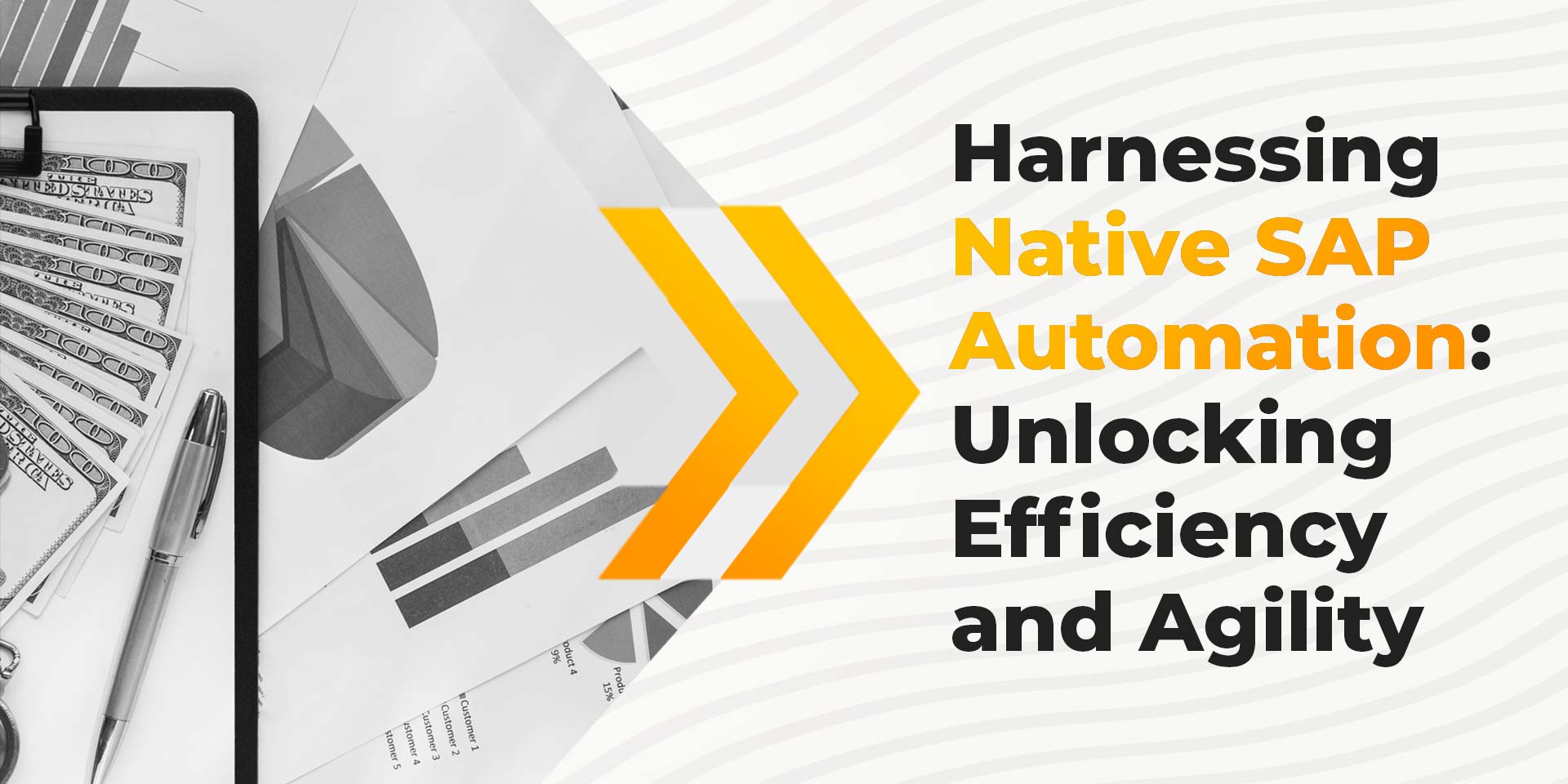Automation
Native Automation
Resilient Automation Frameworks- A Necessity in the Digital Era


- Table of Contents
- Introduction
- Understanding Resilient Automation
- Differentiating Native Automation in SAP
- The Resiliency Framework- Is It A Necessity?
- Step 1- Business Continuity and Recovery From Pitfalls
- Step 2- Adapting to the Digital Imperative
- Step 3- Ensuring Long-Term Competitiveness
- Step 4- Enabling Strategic Resource Allocation
- Step 5- Meeting Regulatory and Compliance Demands
- Step 6- Embracing Change as an Opportunity
- Conclusion
Introduction
In the relentless pursuit of efficiency and adaptability, businesses are turning to resilient automation frameworks as their guiding light in the digital age. Among these, Robotic Process Automation (RPA) stands out, playing a pivotal role in the heart of many enterprises, standing tall among various workflow automation technologies, boasting an impressive adoption rate of 31%.
In this blog, we will delve into the intricate world of resilient automation, shedding light on the nuances of the native approach of RPA and highlighting how it distinguishes itself in the realm of workflow processes and automation.
Understanding Resilient Automation
InNative solutions involve automating applications in their native language, utilizing API-centric approaches. This approach streamlines processes by capitalizing on direct system interactions, leading to reduced latency, enhanced user experience, and improved performance efficiency.
InResilient automation is about building adaptable systems and processes that can function effectively despite unexpected challenges. In the realm of SAP automation, this becomes crucial. Traditional approaches often struggle with system changes and updates, disrupting business operations. Resilient automation with a native approach, however, ensures continuity in the ever-evolving SAP ABAP landscape.
Differentiating Native Automation in SAP
Native automation, particularly in the context of SAP ABAP, stands out due to its direct integration with the system's API. Traditional automation methods require UI-based interactions, which rely on intermediary layers. User interface elements might shift with software updates, causing automation scripts to fail. Native automation bypasses this vulnerability by ensuring stability and interacting directly with the SAP system's underlying architecture. Relying on backend automation ensures consistency in processes, reduces the scope of errors, and significantly enhances efficiency.
Through native solutions, businesses gain a comprehensive understanding of their processes, enabling them to focus on higher-value tasks and strategic decision-making. Analytics become more potent, allowing for data-driven insights that can drive operational efficiency and innovation. Furthermore, native automation simplifies showcasing the potential of automation across various processes within an organization.
The Resiliency Framework: Is It A Necessity?
The question no longer revolves around whether businesses should adopt resilient automation frameworks, especially within the intricate realm of SAP ABAP automation, but rather why they must. This shift in perspective is not merely a response to technological advancements; it’s a strategic imperative born out of the imperative need to stay relevant, competitive, and adaptive in the face of relentless digital evolution. Let us dive into the key reasons behind this paradigm shift.
- Business Continuity and Recovery From Pitfalls
- Adapting to the Digital Imperative
- Ensuring Long-Term Competitiveness
- Enabling Strategic Resource Allocation
- Meeting Regulatory and Compliance Demands
- Embracing Change as an Opportunity
The business landscape, especially in sectors heavily reliant on SAP automation, is marked by unpredictable challenges. In this volatile environment, resilient automation frameworks, particularly those rooted in native SAP automation, offer a safeguard. They provide businesses with the necessary flexibility and adaptability to navigate through unexpected hurdles, ensuring operations continue without significant interruptions. This capability is particularly crucial for mission-critical processes within SAP systems, where even brief interruptions can have crippling consequences.
The world has entered a digital imperative, where businesses are expected to not only keep pace with technological advancements but also lead the charge. With the increasing reliance on technology, businesses can no longer afford downtime or disruptions. Resilient automation frameworks empower businesses to meet this imperative head-on.
They facilitate the seamless integration of automation into existing workflows, enabling companies to leverage SAP automation as a transformative force rather than merely a functional necessity. This adaptability is no longer a choice but a fundamental requirement for survival and growth in the digital age.
In an era where businesses are in a constant race to innovate and outperform competitors, resilience becomes a key differentiator. Resilient automation frameworks, particularly when deeply rooted in native SAP automation, ensure long-term competitiveness.
They enable businesses to not only streamline operations but also focus on strategic initiatives, fostering innovation and customer-centricity. Remaining competitive is no longer just about keeping up; it's about setting the pace and shaping the industry landscape, a feat achievable through resilient automation.
Resources, both human and financial, are finite. Resilient automation frameworks optimize resource allocation strategically. By automating repetitive, mundane tasks, these frameworks allow businesses to channel human expertise towards strategic initiatives. Employees are empowered to focus on innovation, creative problem-solving, and high-value tasks that drive growth. This strategic resource allocation isn't just beneficial; it’s imperative for businesses aiming for sustainable, long-term success.
Regulatory landscapes are constantly evolving, imposing stringent demands on businesses. Resilient automation frameworks, rooted in native SAP automation, provide a robust mechanism to ensure adherence to compliance requirements. They offer the flexibility to adapt swiftly to changing regulations, safeguarding businesses from penalties and reputational damage, making compliance management not just efficient but foolproof.
Change, once feared and resisted, is now seen as an opportunity for growth. Resilient automation frameworks redefine change, turning it from a disruptive force into a catalyst for evolution. Businesses adopting these frameworks leverage change to fuel progress, enhance efficiency, and drive innovation. The resiliency framework becomes a vessel through which businesses not only weather storms but also explore new avenues for growth and success.
Conclusion
In today's ever-changing business landscape, resilience is crucial for survival. Resilient automation frameworks form the foundation of successful businesses, enabling process automation, resource optimization, and embracing change as a growth opportunity. With native SAP automation, these frameworks enhance efficiency and ensure regulatory compliance.
By leveraging a resiliency framework alongside the right RPA solution, businesses can overcome disruption and uncertainty, emerging stronger and more agile. Invest in a resilient automation framework to future-proof your organization, streamline operations, drive innovation, and meet regulatory demands.










